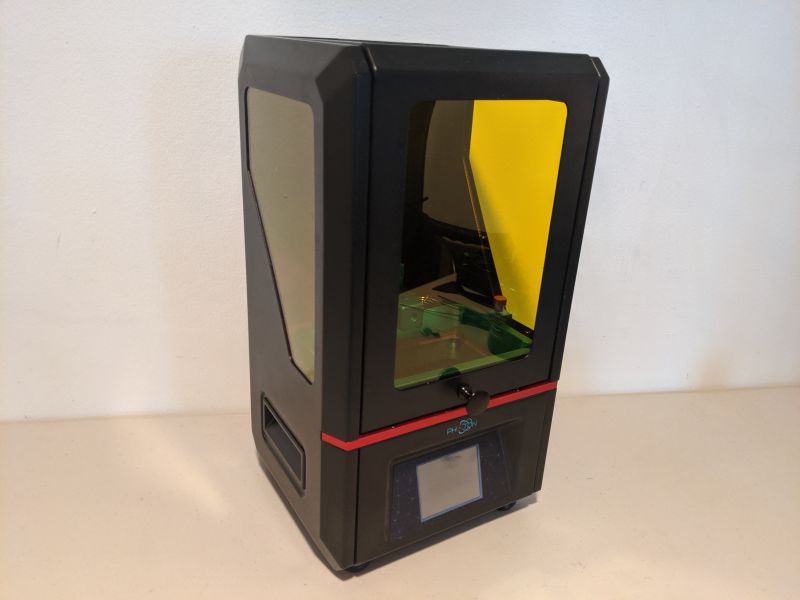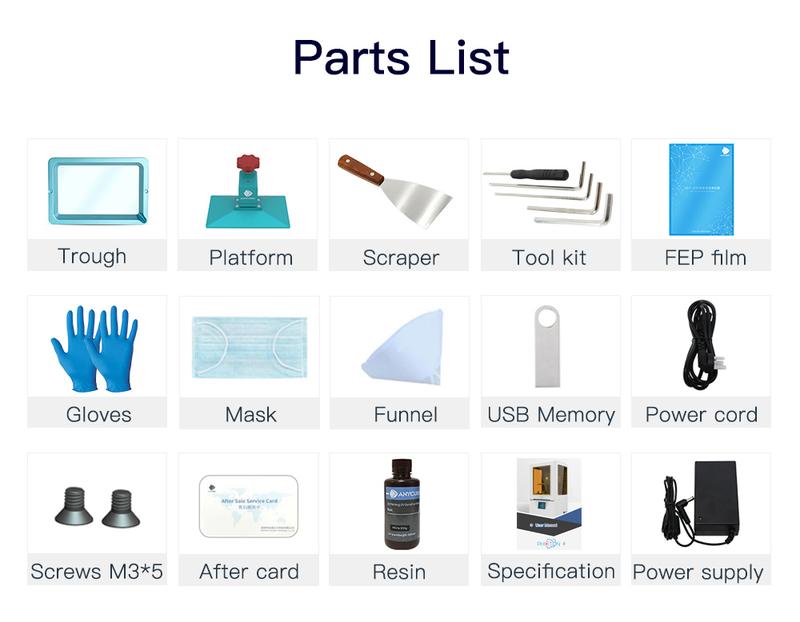- Anycubic Photon Slicer Software Mac Version
- Anycubic Photon Slicer Software Mac Os
- Anycubic Photon Slicer Software Mac
But mostly, we're software liberators. And we're very, very good at what we do. Lots of developers work with open source, but only a tiny fraction of those are good enough to get software that was designed for one platform to work on another one. Anycubic's Photon uses its own proprietary slicer. Dig into this Anycubic Photon slicer guide. We show you all you need to know to get started!
Historically, resin 3D printing has always been more expensive than FFF/FDM solutions. But the trend slowly started to change. A few years ago, some machines have emerged in the range below a thousand dollars. The prices have continued to plummet, so now there are devices that cost just a few hundred dollars.
Anycubic Photon Zero is one of such 3D printers. But unlike the majority of its competition in this price range, it has a brand name attached (and is an addition to a well-known line) and boasts a really sophisticated and functional design. In this article, we will talk about its main features, advantages, and disadvantages.
Source: anycubic.com
Anycubic was founded by two childhood friends — James Ouyang and Lu Ouyang — in 2015. Their business initially started as a way to sell 3D printing accessories, before they decided to try to release a fully-fledged 3D printer. The device was called Anycubic Mega and released in 2016. It became popular and launched the company on the path of a successful 3D printers manufacturer.
However, their most popular device was their LCD 3D printer: the Anycubic Photon. Released in late 2018, the machine was considered one of the best affordable resin printers on the market. The upgraded ‘S’ version has followed, and now there’s a compact ultra-budget version available. — the Photon Zero.
Anycubic Photon Zero Overview
Source: anycubic.com

The Photon Zero is essentially a smaller (its build volume is 97 x 54 x 150 mm) and is an ultra-budget version of the original Photon. But don’t let the price fool you: while the device is extremely affordable, it provides a decent quality of the prints and is a nicely built machine. It comes fully assembled and achieves great stability along the Z-axis, thanks to the combination of linear rail and a lead screw. This improves the accuracy of printing. An upgraded UV module allows for more even light distribution across the print bed,
Other features include a cooling system, a quick FEP replacement mechanism, and level marks on the resin tank. The x16 antialiasing is supported and significantly improves the print quality. There’s also a ‘door detection’ feature that pauses printing when a lid is removed.
Technical Specifications
- Technique: LCD-based SLA
- Light Source: 405nm
- Build volume: 97 x 54mm x 150mm
- XY Resolution: 0.1155mm, 854*480p
- Z Axis Resolution: 0.01mm
- Layer Resolution: 0.01~0.2mm
- Printing Speed: 30mm(H)/hour
- Power: 30W
- Materials: 405nm UV resin
- Machine size: 180 x 195 x 367 mm
- Printing Volume: 97 x 54mm x 150mm
- Weight: ~4.7kg
- Price: $169.00
What’s in the Box
The printer is pretty compact, so it’s not surprising that it comes in a rather small box.
Source: youtube.com
The packaging is pretty standard. Everything is neatly and safely placed and there are some accessories inside. These include a screwdriver, some cables, a cloth mask, a scraper, and a pair of gloves.
Source: youtube.com
Preparation
The device comes fully assembled, so you just need to plug in the power cord.
Source: youtube.com
The most important step before your first print would be to level the platform. To do so, click the ‘Tools’ button on the main menu.
Source: youtube.com
Click ‘Move Z’.
Source: youtube.com
And then rise the Z-axis by 10mm by clicking ‘10’ and then the button with an up-arrow.
Source: youtube.com
Loosen the screws on the platform.
Source: youtube.com

Install and secure the platform.
Source: youtube.com
Place a thin (around 0.1 mm) piece of paper over the curing screen.
Source: youtube.com
Click the ‘Home’ button in the ‘Move Z’ menu. Wait for the upper side of the machine to descent and stop automatically.
Source: youtube.com
Apply slight pressure on the platform and then tighten the screws.
Source: youtube.com
Go to the ‘Tools’ menu and click ‘Z = 0’ to save the position.
Source: youtube.com
Then click ‘Enter’. The platform will rise.
Source: youtube.com
Take out the paper. The leveling process is finished.
Now’s the time for the exposure test. Click the ‘Detection’ in the ‘Tools’ menu. Choose the image and click ‘Next’.
Source: youtube.com
Source: youtube.com
The curing screen should display the complete image.
Source: youtube.com
Install the resin vat.
Source: youtube.com
If you want to print a model, then insert the USB stick.
Source: youtube.com

Fill the vat with resin while wearing gloves and a face mask.
Anycubic Photon Slicer Software Mac Version
Source: youtube.com
Cover the printer with the lid. The sticker should be on the rear side.
Source: youtube.com
Go to ‘Print’ in the main menu and choose a model.
Source: youtube.com
Software
Anycubic offers their own proprietary Photon Workshop slicing software, The recent update make the program much more useful and powerful, now the 80 MB will be sliced in a bit over 30 seconds instead of minutes.
Source: youtube.com
Unfortunately, ChiTuBox — a very popular program to use with resin 3D printers — can’t yet be used with the Photon Zero due to the fact that the printer only works with the proprietary .pw0 file format.
Source: youtube.com
Applications
Action figures by Chris Zindrick
Amazon user Chris Zindrick shows some examples of his prints after trying his hand at the resin 3D printing (after years of using the FFF/FDM technology).
You can see how the models turned out. The quality is astounding, especially for the device of such a low price.
Source: amazon.com

Source: amazon.com
Action figure by jesse miller
Amazon user jesse miller at first wasn’t impressed with the printers, having 4 failed attempts in a row. He then realized that the problem was that he didn’t level the platform properly. After that, he was quite pleased with the result.
The miniature below has a great surface finish.
Source: amazon.com
Pros and Cons
Pros
- Very low price
- Sturdy build
- Nice design
- Decent quality of printing
- Pre-assembled and easy to set up
- Compact
- Lid detection system
- Quick FEP replace
- Cooling system
- Highly precise Z-axis motion due to improved mechanics
Anycubic Photon Slicer Software Mac Os
Cons
- Small build volume
- Locked into proprietary Photon Workshop software, since the printer only reads the .pw0 files
- Photon Workshop lags behind some other slicer programs
Conclusion
The Photon Zero is placed at the lowest price range in the world of 3D printers. Which is surprising, considering that only a few years ago resin 3D printing was considered very expensive with the majority of machines costing several thousand dollars.
Despite its low price tag, Photon Zero is a quality machine that is easy to set up and use. Simple yet functional design allows for highly precise Z-axis motion, so the resulting prints are pretty accurate. There are other nice features, including the cooling system, resin vat with level marks, lid detection system, and powerful antialiasing.
Obviously, the device isn’t perfect, it’s currently can only be used with the proprietary Photon Workshop software and doesn’t support the most common slicer aimed for resin printing: ChiTuBox. Another disadvantage is a small build volume, but it’s to be expected, considering the price and the fact that affordable resin 3D printers rarely have large build areas.
Get the latest version of Lychee Slicer, for Windows and Mac OS
Download the latest installer for Lychee Slicer. Use it for free or subscribe to our Pro version from within the application.
Lychee Slicer also include an auto-update system for an easy upgrade to the latest version when installed.
'We design and develop experiences that make people's life easier.'
Mango is a company with at its core a team of developers and electronics engineers passionate about 3D printing and related technologies, who develop software and hardware solutions for individuals, professionals and manufacturers.
Mango is based in Belgium and France.
Anycubic Photon Slicer Software Mac
Copyright 2021 © Mango3d.
All rights reserved, Mango, Lychee, and the associated logos are registered trademarks of Mango SAS. All other trademarks are the property of their respective owners.